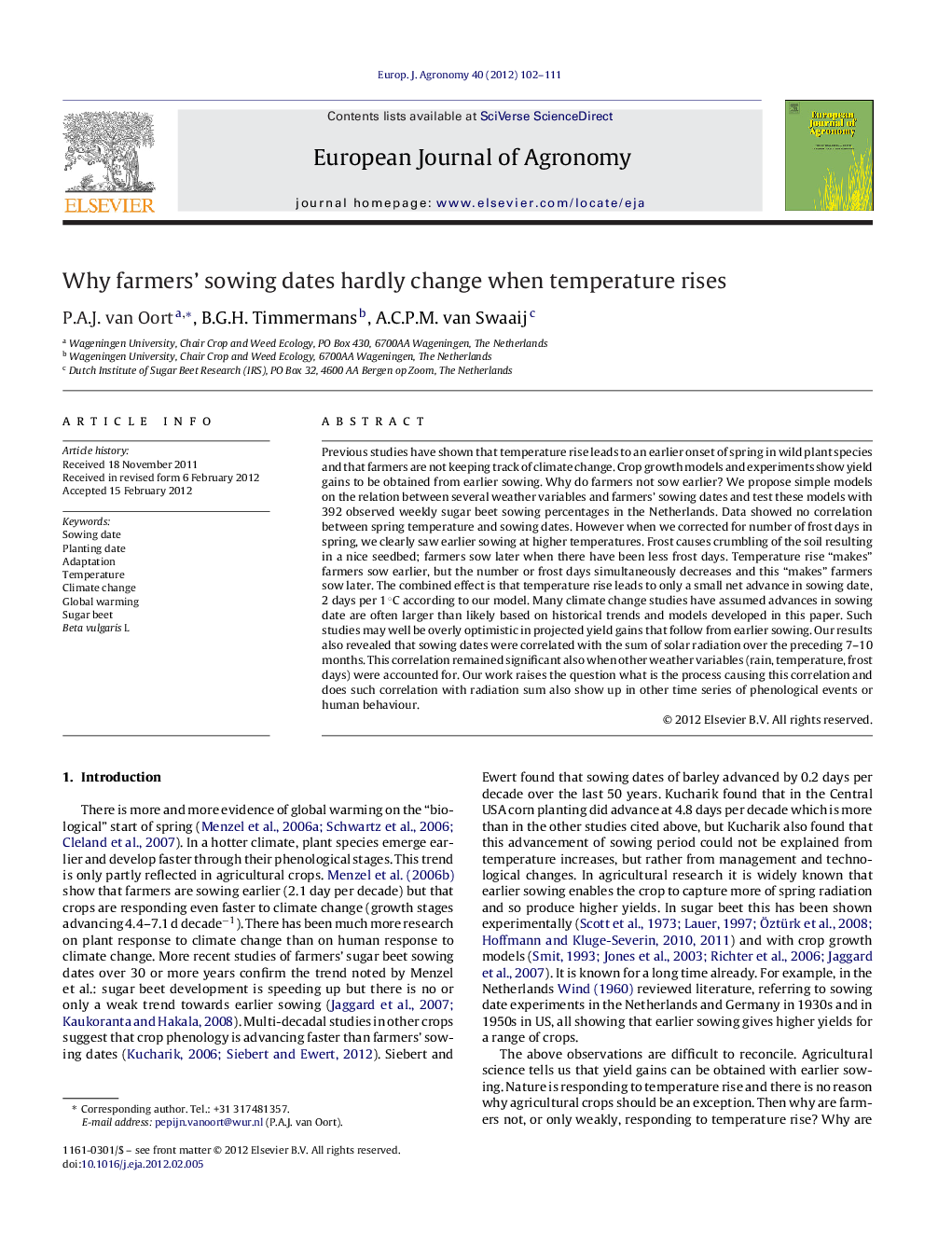| کد مقاله | کد نشریه | سال انتشار | مقاله انگلیسی | نسخه تمام متن |
|---|---|---|---|---|
| 4509047 | 1624486 | 2012 | 10 صفحه PDF | دانلود رایگان |

Previous studies have shown that temperature rise leads to an earlier onset of spring in wild plant species and that farmers are not keeping track of climate change. Crop growth models and experiments show yield gains to be obtained from earlier sowing. Why do farmers not sow earlier? We propose simple models on the relation between several weather variables and farmers’ sowing dates and test these models with 392 observed weekly sugar beet sowing percentages in the Netherlands. Data showed no correlation between spring temperature and sowing dates. However when we corrected for number of frost days in spring, we clearly saw earlier sowing at higher temperatures. Frost causes crumbling of the soil resulting in a nice seedbed; farmers sow later when there have been less frost days. Temperature rise “makes” farmers sow earlier, but the number or frost days simultaneously decreases and this “makes” farmers sow later. The combined effect is that temperature rise leads to only a small net advance in sowing date, 2 days per 1 °C according to our model. Many climate change studies have assumed advances in sowing date are often larger than likely based on historical trends and models developed in this paper. Such studies may well be overly optimistic in projected yield gains that follow from earlier sowing. Our results also revealed that sowing dates were correlated with the sum of solar radiation over the preceding 7–10 months. This correlation remained significant also when other weather variables (rain, temperature, frost days) were accounted for. Our work raises the question what is the process causing this correlation and does such correlation with radiation sum also show up in other time series of phenological events or human behaviour.
► Simple model of farmers’ sowing dates.
► Provides a plausible explanation for why farmers’ sowing dates become only 2 days earlier when temperature rises 1 °C.
► Earlier sowing due to temperature rise is largely offset by later sowing due to less frost days.
► Farmers’ sowing dates also correlated with radiation in preceding 7–10 months, process not understood.
► Implication: climate change adaptation studies may be overly optimistic on advances in sowing dates and yield subsequent gains.
Journal: European Journal of Agronomy - Volume 40, July 2012, Pages 102–111